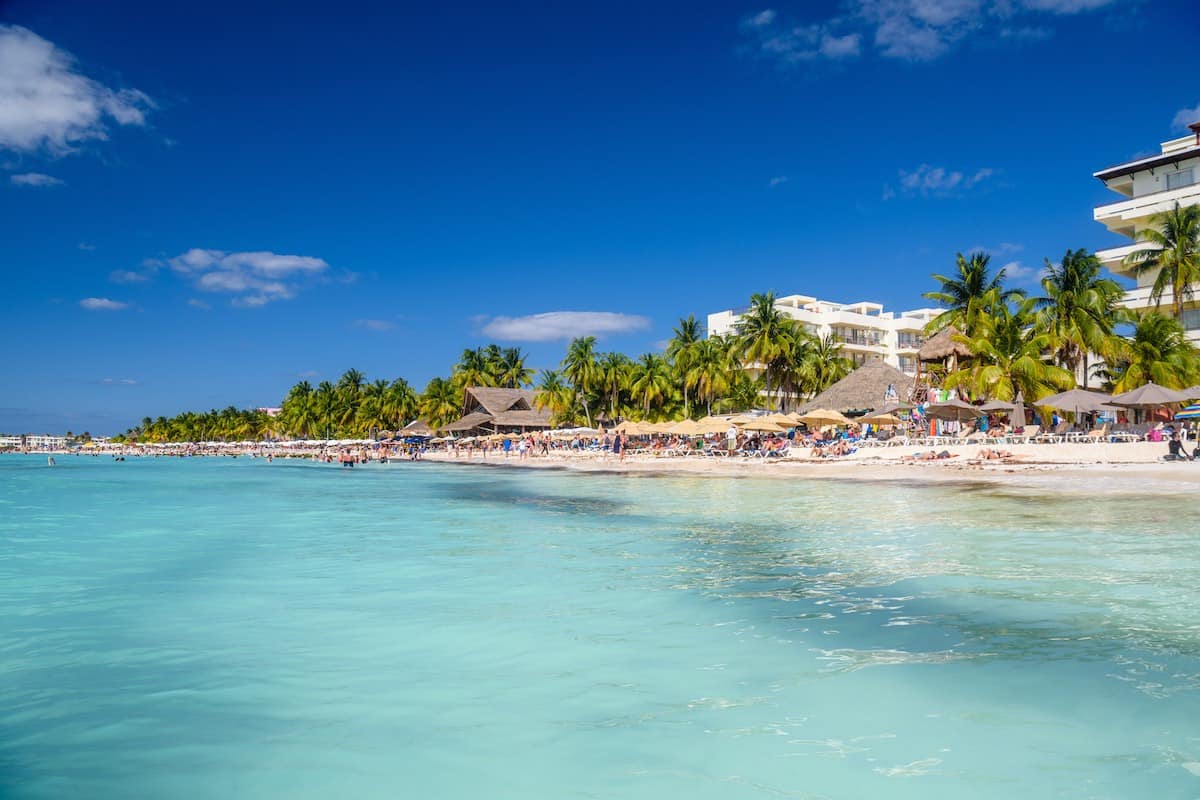Hurricane Fiona has been creating havoc with its dangerous winds and heavy rains across the Caribbean. This hurricane has also affected the natural water currents in the region, changing the direction of the sargassum seaweed, benefitting Cancun.
As reported by the Mexican news website Reportur, beaches in the Quintana Roo region—where tourist destinations like Cancun, Playa del Carmen, and Tulum are located— have considerably less sargassum compared to previous weeks. The large masses of floating seaweed have been swept by the hurricane to the Gulf of Mexico, clearing up the sea and its coast.
Near Cancun, in the coastal resort town Playa del Carmen, sargassum has reached a recent record of minimum presence of this brown seaweed. The Secretary of the Navy of Mexico (SEMAR, by its Spanish acronym) has been monitoring the region and informed that —at least for the rest of the month—low levels of sargassum are expected.

The SEMAR stated: “Hurricane Fiona, category 1, will continue to cause changes in the structure of currents in the Caribbean Sea, so it is expected that the reduction in contributions of sargassum towards the Mexican Caribbean will continue, as well as a gradual decrease of its reach to the Mexican beaches.”
Despite the low levels of sargassum on the beautiful Caribbean coasts, travelers should still remain cautious, especially considering that hurricane season in Mexico has begun and will last until November.
Current Sargassum Levels
According to the information shared by the portal Digital News QR, last week, 42,800 tons of sargassum arrived on the coasts in the Quintana Roo region, 48% less compared to the first week of September.

It has significantly decreased considering that this year, local authorities announced records of over 62,000 tons of sargassum per day. Finally, local authorities, workers, travelers, and residents seem to be getting a break from the impressive sargassum season seen this 2022.
Currently, the Oceanographic Institute of the Gulf and the Caribbean Sea has labeled the sargassum levels as “moderate” in the Mexican Caribbean. The Sargassum Monitoring Network of Quintana Roo shared a report on the amounts of sargassum for the 80 most popular beaches on the region’s coast:
- Excessive: 10.
- Abundant: 5.
- Moderate: 10.
- Very Low: 50.
- No sargassum: 5.

The 10 beaches with excessive levels of sargassum are located on the east side of Cozumel island. And all the west side of the same island has very low levels of brown smelly seaweed.
Three of the beaches in Cancun that have no presence of sargassum seaweed are located in Isla Mujeres: Punta Sur, Playa Centro, and Playa Norte— the most beautiful beach in Mexico. The other clean locations are Isla Contoy and beach Chiquila.
The Battle Against Sargassum

Tourism has been threatened by the impressive masses of sargassum arriving on the Caribean coast in Mexico. Local authorities along with local companies, hotels, resorts, and residents have been arduously working to remove the seaweed from the coast to allow tourists to enjoy the beaches and reduce the unpleasant odor that the seaweed produces when it decomposes.

Due to the natural behavior of the sargassum and the impact of Hurricane Fiona, its presence has been reduced, and, in order to control the seaweed, actions have also been taken. A new sargassum barrier has been recently installed in the water in Tulum’s National Park to prevent the seaweed to reach the shore and measures 2.4Km.
The barrier strategy will be tested with lower levels of sargassum and, hopefully, will allow travelers to enjoy the white sand and pristine waters of this top destination in the Quintana Roo region. The seaweed captured by the barrier will be collected by boats and later placed in special landfills for this purpose.
More and more beaches in the Mexican Caribbean are breaking free from sargassum, and top beaches and destinations in Cancun are currently more enjoyable.

